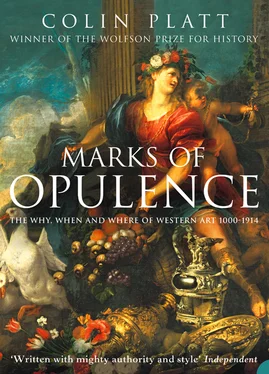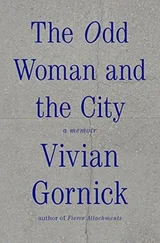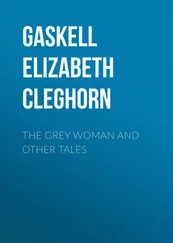1 ...6 7 8 10 11 12 ...22 With the economy speeding up and money no longer tight, one circumstance especially favoured large-scale building. ‘Thou shalt not lend upon usury’, ran the ancient teaching of the Church, whether ‘usury of money, usury of victuals, [or] usury of any thing that is lent upon usury’ ( Deuteronomy 23: 19). And while frequently disregarded from the thirteenth century if not earlier, that doctrine remained unchanged throughout the Middle Ages, holding back the evolution of money markets. It was not, for example, until late in the seventeenth century that London developed fully the sophisticated banking and commercial systems which helped make it into Europe’s largest city. And before that time, the unresolved problem of the urban rich was where – if not in land or treasure – to keep their money. In compensation, towns before the plague were good places to live: they were free, well-protected, and expanding quickly. But where fully a third of Europe’s cultivable land-space was already alienated to the Church, and where most of the remainder was locked away in the protected family holdings of the nobility, what was left sold only at a premium. Confident in their own abilities and anticipating little profit from the fields outside their walls, the comfortably-off citizens of Chartres, Bourges and Rheims, of Beauvais, Tours and Amiens, were the more easily persuaded to put their money into building when almost every other option was circumscribed.
Where they began was on the rebuilding of their cathedrals. But with the arrival of the friars, from early in the thirteenth century, another popular receptacle for surplus profits opened up. It was in 1210 that Francis of Assisi’s Regula Prima was first approved at Rome, and as late as 1216 that Dominic of Caleruega’s Order of Friars Preachers was formally recognized by Pope Honorius III. Yet so well targeted were the Mendicants, closely focused on the towns, that Matthew Paris (a Benedictine of St Albans) would say about them by the mid-century:
Brothers of many orders swarmed, now Preachers [Dominicans], now Minors [Franciscans], now Cruciferi [Crutched Friars], now Carmelites … The Preachers indeed and the Minors at first led a life of poverty and the utmost sanctity, devoting themselves wholly to preaching, hearing confessions, divine services in church, reading and study. Embracing poverty voluntarily for God, they abandoned many revenues, keeping nothing for themselves for the morrow by way of victuals. But within a few years they were stocking up carefully and erecting extremely fine buildings. 3
Writing in 1250, Matthew Paris had seen the friars triumph over his own brethren too many times. And what he neglects to mention is that it was not always – nor even usually – the friars themselves who had chosen to build with such magnificence. Both the Dominicans and the Franciscans – the two senior orders – had insisted from the start on simple life-styles. ‘Our brothers shall have modest and humble houses’, runs a Dominican constitution of 1228, ‘so that the walls of houses without an upper room shall not exceed twelve feet in height, and of those with an upper room twenty feet, the church thirty feet; and their roofs should not be vaulted in stone, except perhaps over choir and sacristy.’ 4 And when, in 1260, Bonaventure (the ‘Seraphic Doctor’) brought the Franciscans back to unity after the divisions which had followed their founder’s death, his new statutes insisted that no churches of the order should have bell-towers of their own; that expensive vaults (as with the Dominicans) should be limited to the presbytery; that the only stained-glass imagery should be in the great east window over the high altar; and that ‘since exquisite craftsmanship and superfluity are directly contrary to poverty, we order that such exquisite craftsmanship, whether in pictures, sculpture, windows, columns and suchlike, and any superfluity in length, width or height above what is fitting to the requirements of the place, be more strictly avoided’. 5
Such ‘superfluities’ had indeed characterized a great number of Franciscan churches, not least the huge basilica at Assisi itself which Brother Elias began building, soon after Francis’s death in 1226, in clear contravention of the saint’s explicit wishes. Yet it was overeager patrons, in almost every case, who had commissioned them. ‘King Louis’, wrote Jean de Joinville in his hagiographic history of Louis IX of France (1226–70), ‘loved all people who devoted themselves to the service of God by taking on the religious habit; none of these ever came to him without his giving them what they needed for a living.’ And while it was the Franciscans and the Dominicans who profited most from that largesse, Louis bought land also for the Carmelites on the Seine near Charenton, ‘where he built them a monastery and supplied it, at his own expense, with vestments, chalices, and such other things as are essential for the service of our Saviour’; he provided a site and built a church for the Austin Friars ‘outside the Porte Montmartre’; and he gave the Friars of the Holy Cross (Crutched Friars) a house ‘in the street once known as the Carrefour du Temple, but now called the rue Sainte-Croix’. In this way, boasts Joinville, ‘the good King Louis surrounded the city of Paris with people vowed to the service of religion’. 6
‘They have already encircled the city’, sang Rutebeuf, the jongleur, taking the opposite view; ‘God keep Paris from harm/and preserve her from false religion.’ 7 And it was undoubtedly the case that Louis IX’s too obvious advocacy of the friars in their long mid-century dispute with the secular masters of the University cost him much support in his own capital. ‘There were times’, Joinville admits, ‘when [even] some of those who were most in his confidence found fault with the king for spending so lavishly on what seemed to them over-generous benefactions’. 8 Yet the friars, whether as preachers to urban audiences or as buriers of the dead, were in no danger of losing their appeal. It was in Louis’s own Sainte-Chapelle – built at huge cost in the 1240s to house his most precious relic, the Crown of Thorns – that the king and his family heard the friars preach on many occasions. And high on the list of Louis’s favourite preachers was that same Bonaventure, once himself a famous teacher in the Paris schools, who restored order to the Franciscans in 1260. Over a quarter of Bonaventure’s sermons while minister-general are known to have been delivered on return visits to Paris, when the king was very often in his audience. They satisfied an addiction as powerful in Louis IX as the passion of Henry III, his English brother-in-law, for hearing masses. 9
With Louis’s monumental reliquary rising before him as a challenge, Henry III was at least as determined to build a shrine of his own of similarly exemplary magnificence. Begun in 1246, when work on the Sainte-Chapelle (consecrated in 1248) was still in progress, Henry’s abbey church at Westminster replaced the demolished pre-Conquest church of King Edward the Confessor, whose canonization in 1161 had made him the focus of a developing cult to which Henry was personally devoted. No materials were too expensive nor spaces too grand for a work of such intense royal piety. Yet Henry was impatient to see it finished: ‘Because the king wishes that the works of the church of Westminster should be greatly speeded up ( multum expedirentur )’, orders Henry III’s testy writ of 30 October 1252, ‘Henry, the master of the said works, is directed to have all the marble work raised this winter that can be done without danger.’ 10 The cost of this one project was enormous; Westminster alone (of all Henry’s many building enterprises) absorbed the equivalent of more than a year of the royal revenues, and contributed significantly to the popular unrest which culminated in the Baronial Revolt of 1263–5. Yet as Louis IX had told his critics: ‘I would rather have such excessive sums as I spend devoted to almsgiving for the love of God than used in empty ostentation and the vanities of this world.’ 11 And where ‘magnificence’ in every gesture was routinely demanded of a king, there was little to be gained by royal parsimony. A generation later, in typical Mendicant-speak, the Dominican Federico Franconi would invoke a pagan Greek philosopher to justify the pious works of Louis’s nephew Charles II, King of Sicily (1285–1309):
Читать дальше












